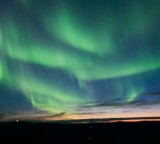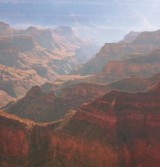Use music to introduce a sense of wonder into your geography lessons, suggests Arthur Kelly.
Music is a powerful form of communication. It both elicits deeply personal responses and crosses cultural boundaries; it is a glue that binds us together. The media, film makers and advertisers know music has a powerful impact and use this knowledge to influence our emotions and memories. As teachers, we can take the same techniques and apply them to learning in the classroom.
Specifically, I’ve been exploring how listening and responding to music can support geographical learning. The ideas I’ve tested in the classroom have been well received by primary children, student teachers and experienced practitioners; and hopefully you too, should you try the following activities with your pupils.
 At the outset, it is important to state that children’s responses to music need scaffolding. If this is done skilfully then listening to music from around the world can:
At the outset, it is important to state that children’s responses to music need scaffolding. If this is done skilfully then listening to music from around the world can:
• Engage children’s sense of wonder at the beauty and variety found on this planet.
• Stimulate children’s interest in different cultures and social conditions around the world.
• Have an emotional impact that can modify cultural stereotypes.
• Develop children’s awareness of their own place in the world through exploring how we are all connected.
 The ideas in this article are intended to harness the way that music affects our emotions in order to stimulate geographical enquiry. However, through my work I have found that some children have difficulty expressing emotional responses beyond ‘happy’ or sad’. If this is the case, it helps to provide them with a bank of words that describe different emotions. Then when you play a piece of music, children can choose the word that reflects how it makes them feel. With scaffolding, this can develop pupils’ emotional literacy whilst at the same time exposing them to different cultures.
The ideas in this article are intended to harness the way that music affects our emotions in order to stimulate geographical enquiry. However, through my work I have found that some children have difficulty expressing emotional responses beyond ‘happy’ or sad’. If this is the case, it helps to provide them with a bank of words that describe different emotions. Then when you play a piece of music, children can choose the word that reflects how it makes them feel. With scaffolding, this can develop pupils’ emotional literacy whilst at the same time exposing them to different cultures.
Also, before you start, make sure you have maps and atlases to hand so that children can find out where the music they are listening to comes from.
This organisation promotes world music as a foundation for multicultural learning. CDs and teaching support materials are available.
An educational charity that promotes awareness, understanding and respect for cultural diversity through music and the performing arts.
http://www.oxfam.org.uk/education
Log on to the website, click on ‘resources’ and then search for ‘Global Music Lesson Plans’.
“Bachianas brasileira No 2 by Villa Lobos is a musical journey on the ‘Little Train of the Caipara’, which runs through rural Brazil. Given pictures of the landscape, children could imagine they are on the journey themselves.”
 This is a great strategy for promoting a sense of wonder at the world we live in and I have used it in assemblies and class teaching. Create a PowerPoint using images that demonstrate the diversity of human life and physical landscapes on the Earth (try looking on geography.org.uk/resources/photogallery). Tell your group that you want them to look carefully at the presentation and think about which image – or images - they find the most amazing.
This is a great strategy for promoting a sense of wonder at the world we live in and I have used it in assemblies and class teaching. Create a PowerPoint using images that demonstrate the diversity of human life and physical landscapes on the Earth (try looking on geography.org.uk/resources/photogallery). Tell your group that you want them to look carefully at the presentation and think about which image – or images - they find the most amazing.
Play the presentation to your group using Louis Armstrong’s What a Wonderful World as background music – this provides a great emotional lift.
Ask the children to talk about which images they found the most impressive and why, then go through the presentation again without the music and discuss. This can be extended through questioning (e.g. which place would you most/least like to visit and why?). More able children can also make their own presentations, either at a global or local level.
 Ask the children about the music they like to listen to, and whether there’s a particular place they like to listen to it. Let them bring in their favourite pieces of music and encourage pupils to share the reasons behindtheir choices with their peers. This promotes oracy but also allows children to talk about their sense of identity, which will be linked to family, community, culture and place; the last of which is a key geographical idea. You could ask children to represent their responses through art and display.
Ask the children about the music they like to listen to, and whether there’s a particular place they like to listen to it. Let them bring in their favourite pieces of music and encourage pupils to share the reasons behindtheir choices with their peers. This promotes oracy but also allows children to talk about their sense of identity, which will be linked to family, community, culture and place; the last of which is a key geographical idea. You could ask children to represent their responses through art and display.
 Playing songs that feature place names in the lyrics (e.g. New York, New York, Is this the way to Amarillo?, Barcelona) is a fun way to develop children’s atlas skills and their locational framework at a global level.
Playing songs that feature place names in the lyrics (e.g. New York, New York, Is this the way to Amarillo?, Barcelona) is a fun way to develop children’s atlas skills and their locational framework at a global level.
Choose a list of songs and write down the places mentioned in the lyrics on set of cards. Now play the music and ask children to select the correct card whenever they hear a place name mentioned.
Children should then use atlases and an outline of a world map to plot where these places can be found. This can be developed further by asking pupils to decide in which order they would visit these destinations and how they might travel.
More able children could find out what they might see if they were to visit the locations mentioned in the songs. For homework, you could challenge pupils to ‘go around the world in 80 songs’ – i.e. can they find 80 songs that mention place names?
 Some pieces of music depict a particular landscape, or describe a journey. For example, Bachianas brasileira No 2 by Villa Lobos is a musical journey on the ‘Little Train of the Caipara’, which runs through rural Brazil. Given pictures of the landscape, children could imagine themselves in that place - or on the journey - and what they might see, creating a map to communicate their travels.
Some pieces of music depict a particular landscape, or describe a journey. For example, Bachianas brasileira No 2 by Villa Lobos is a musical journey on the ‘Little Train of the Caipara’, which runs through rural Brazil. Given pictures of the landscape, children could imagine themselves in that place - or on the journey - and what they might see, creating a map to communicate their travels.
 Different countries and regions have their own traditional folk music and are associated with particular instruments. The tango is rooted in Argentina, flamenco in Spain and samba in Brazil. The harp is seen as a symbol of Welsh culture, just as the bodrhan is prominent in Irish tradition.
Different countries and regions have their own traditional folk music and are associated with particular instruments. The tango is rooted in Argentina, flamenco in Spain and samba in Brazil. The harp is seen as a symbol of Welsh culture, just as the bodrhan is prominent in Irish tradition.
Let children listen and respond to music from different places. A display could then be made locating a variety of musical styles and instruments on a world map, along with the children’s responses to the music.
The ideas I’ve presented here are open stimuli, intended to help children undertake geographical journeys and develop an understanding of big ideas such as place, identity, interdependence and diversity. So far I have focused on using recorded music, but I feel there is huge potential in harnessing children’s creativity in composing and performing work that articulates their personal sense of place as well.
 Short blasts of music work best…
Short blasts of music work best…
30 seconds is a good length of extract if you’re planning an exercise that uses quite a few pieces of music. This allows you to cover more ground; and longer play times can cause children to lose focus. This can be a pain if you have to swap CDs, but the freely downloadable software Audacity allows you to create short extracts and then sequence them on your laptop.
Help Pupils Tell Fact From Fiction In The Digital World
Ace-Computing
Join the tribe with a stone age forest school
Ace-Classroom-Support
